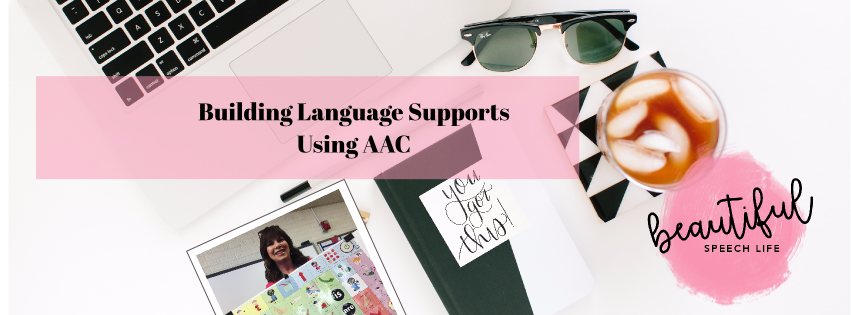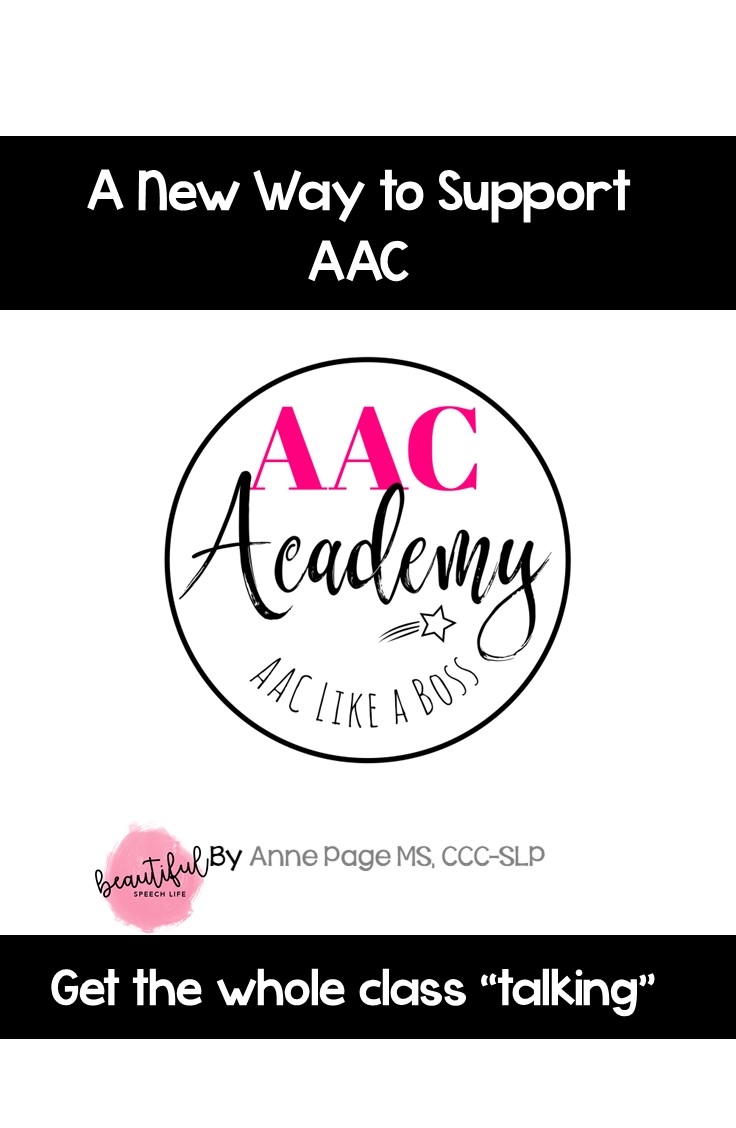I’m still riding high from SLP Summit earlier this month. In case you missed it, my presentation was titled “Building Language supports through AAC”. I co-presented with Brian Whitmer from Coughdrop AAC. He handled high-tech while I spoke about low-tech AAC.
The excitement, the connections, the information and the buzz was so uplifting and informative. I’m so thrilled to have been a presenter during this groundbreaking activity. The comments and questions, were so good, and I want to take the time to answer some of the really pertinent questions here. I’ll also provide many of the links and resources that I talked about.
 No more FOUA (fear of using AAC).
No more FOUA (fear of using AAC).
So let’s jump right in…
“As the year for me is gearing up, I was discussing some suggestions for low-tech AAC or no-tech communication opportunities with one of my colleagues. I suggested to her that she might try some routines during sessions, and what came to my mind was the “magic wand” greeting and greeting song from the webinar you did during the Winter SLP summit. I was just wondering if perhaps you had a list of suggestions for routines you might use that would have an expected or repetitive response, similar to those activities I mentioned above?”~Caitlyn
This is a great question from Caitlin. I agree that routines are amazing in the special needs classroom. Here are some of my favorites:
Use the magic wand to reinforce greetings when entering the room. A lot of our kiddos are not expected to greet anyone in any way. This is a really important social skill and a way for them to connect. Model waving and saying hi, hello. As soon as you get any type of response, give them some magic.
With the younger kids, integrate a Hello song and Goodbye song. The links to see them are here on my YouTube channel. (please excuse my bad singing, haha).
As the kids get older I like to use something more age appropriate such as Whole Brain teaching rules. We start each and every session with the “rules”. I use the posters for visual support, hand movements, and consistency. We love them. Here’ a little video of us using them during our speech session.
I’ve had really good success with the use of a simple visual schedule, just three or four little picture cards to show what we’ll be doing during our speech time. It doesn’t have to be perfect or beautiful, just consistently used.
Incorporating songs and song choices into our group time has also been a big hit. I use a Go Talk (more low-tech AAC) with little recorded snippets of each song for each buttons. Some examples are: Wheels on the Bus, Looby Loo, Twinkle Twinkle and Head & Shoulders. Over time you get the advantage of the students learning the songs too (especially if you incorporate hand movements and make it fun). Here is a link to my Pinterest board of transition songs.
Routine and predictably are your best friends. Last year, I followed the same basic routine in each of the three functional skills classrooms I work with. Here is my magic list.
Primary functional skills: Magic wand, hello song, criss cross applesauce, go talk song Choices, core vocabulary board activity, 3 – 4 minutes iPad time for the whole group as a reward, the Goodbye song.
Grade 4 5 6 functional skills: Say hello and shake hands as they enter the room, whole brain teaching rules all together, core vocabulary activity, 3 – 4 minutes iPad time for the whole group as a reward, age appropriate song on iTunes that we all chose together.
Grade 7 8 functional skills: Say what’s up and shake hands (or fistbump) as they enter the room, whole brain teaching rules all together with more age appropriate hand movements, therapy activity, 3 – 4 minutes iPad time for the whole group as a reward.
I hope this gives you some good ideas for your sessions.
How do you print the Core Board so large?
Great question. You don’t need any oversize printer or Kinko’s. Each page has four symbol squares, I have them in order, with really complete instructions. Just glue them to a poster board and then laminate. Easy peasy. Click here to learn more about the BIG Core board.
Is there research to support the 10-second hold for pointing when modeling? Everyone loves research to back up what they’re saying especially when trying to get ABA professionals on board. -Amanda
Another great question! I don’t have the answer yet. There are several references to the 10 second point, but as far as research for the exact time I’ll have to keep looking. I’d say it is a suggested time by some highly experienced AAC experts (see these references).
“Can I get a handout of the slide presentation?”
So many people asked for a copy of the slide presentation, I apologize for not including it. You can click here for the attachment.
I’m also answering some of the questions on Facebook. Click here to see.
Thank you so much to everyone who attended. I’m working on another AAC presentation as we speak.
Remember feel the FOUA and do it anyway,



 Hey there I’m Anne Page. I help heart centered SLPs and educators put the fun in functional communication.
Hey there I’m Anne Page. I help heart centered SLPs and educators put the fun in functional communication. 
Is this presentation still available to watch somewhere?
Hi Jenni,
It was only available during the SLP Summit. You might be interested in the one I did for AAC in the Cloud, it’s available here http://bit.ly/AACintheCloud